This is Home: memories from Clare House of life before eviction
Nearly two years after Clarion Housing evacuated 120 households from Clare House tower block, former residents share memories of their home in Bow.
If you’ve been lucky enough to experience sunset in Victoria Park, you might’ve looked Eastwards and seen the light pink and coral exterior of Clare House tower block, illuminated against an otherwise empty skyline.
And if you’ve looked really closely, you might have noticed that the block has been vacant in recent years, ever since Clare House residents were told on 27 September 2021 they had 48 hours to pack up their belongings and leave. It was later revealed that Clarion Housing, which managed the flats, had known about the evacuation for ten days prior.
Residents were informed of the evacuation by door knocks and only found out via information packs that the building had non-compliant cladding and a dangerous structure despite formerly being reassured of the block’s safety. The block is 22 floors high and holds 120 flats.
More than 18 months since the rushed eviction, myriad questions remain unanswered. Many former Old Ford residents are still struggling with the repercussions of having to leave their homes.
There’s a sense of community in a tower block that you don’t get in the outside world.
Nada Holland
A spokesperson for Clarion said: ‘We are considering a number of options for the future of Clare House, including the refurbishment of the existing building as well as its possible replacement. Work is almost complete and we will be finalising our proposals in the next few months.’
In the meantime, Bow’s most colourful tower block still keeps watch over Victoria Park as the flats inside gather dust.
Coming together at a recent mediation with Clarion, former resident Nada Holland says it was shocking to see how traumatised many of her old neighbours were. ‘But seeing everyone also reminded me of the unity and community we had as neighbours. We really carried each other through that nightmare, none of us would’ve been able to do it alone,’ she says.
And so, rather than let the chaotic departure overshadow happier memories, we hear from three individuals about the people and experiences that made Clare House a home.
Nada Holland
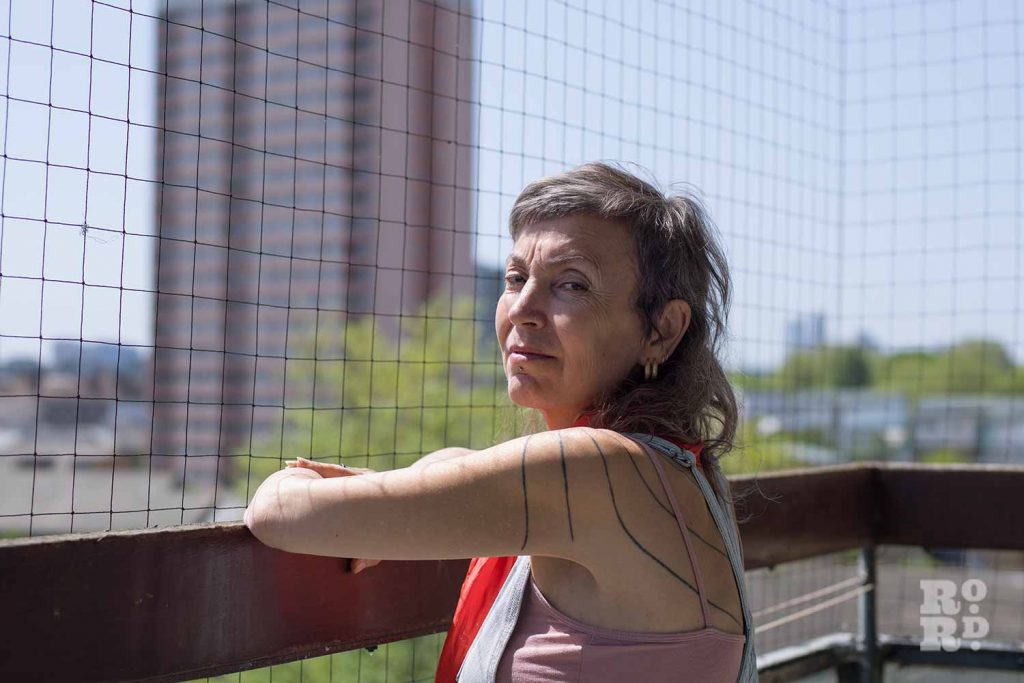
When Nada Holland moved into Clare House in 2020, she found a flat suffering from years of neglect and frequent flooding. Moving in during lockdown, she was left to her own devices. With the help of her university-aged son, Holland embarked on the mammoth task of stripping the entire flat’s interiors back to the concrete and starting again from scratch.
Accustomed to the Netherlands’ fiercely democratic society, Holland can’t make sense of the UK’s rigid class structure and the negative connotations associated with being common. ‘I love my neighbours. I love being common. What’s better than social housing for that?’ she asks.
‘The feeling of class anxiety over here is really corrosive and keeps people so remote from each other,’ she explains: ‘There’s a sense of community in a tower block that you don’t get in the outside world.’
In a city where rental prices have hit record highs, social housing is the only option for a growing number of Londoners. But for Holland, it’s about more than affordability: ‘It’s about working for the community and for the common good, and there was definitely a sense of that in Clare House,’ she says.
‘Everyone has their flaws, their insecurities and their struggles, but there was a real sense of compassion.
‘Yes, you have the in-house alcys and other problems that might be frowned upon in the outside world, but that’s how it is. There’s more of a sense of togetherness and less judgement in social housing.’
After the evacuation, Holland and her son were rehoused in Waverton House, a few roads away from Clare House. She describes herself as one of the ‘lucky ones’ for being able to remain in Bow and still look from her balcony onto the familiar views of Victoria Park.
Yet she recalls vividly the day of the evacuation: the vulnerability she felt carrying all of her possessions from her home, the contents of her inner life suddenly exposed. Particularly saddened by the loss of her house plants, Holland has started afresh with her new home and hasn’t tried to recreate her flat in Clare House.
Instead, she carries with her the memories of her neighbours, whom she is reminded of when she hears John Holt’s 1973 reggae hit, Help Me Make It Through The Night. Singing her own rendition, she tries to keep a straight face: ‘It’s such a Roman Road and Bow song. It should be blared from cars and listened to with friends and neighbours.’
‘To me, that song expresses that commonness that we should hold as an aspiration. If we can bolster that we can even withstand Clarion.’
Tufayel Ahmed
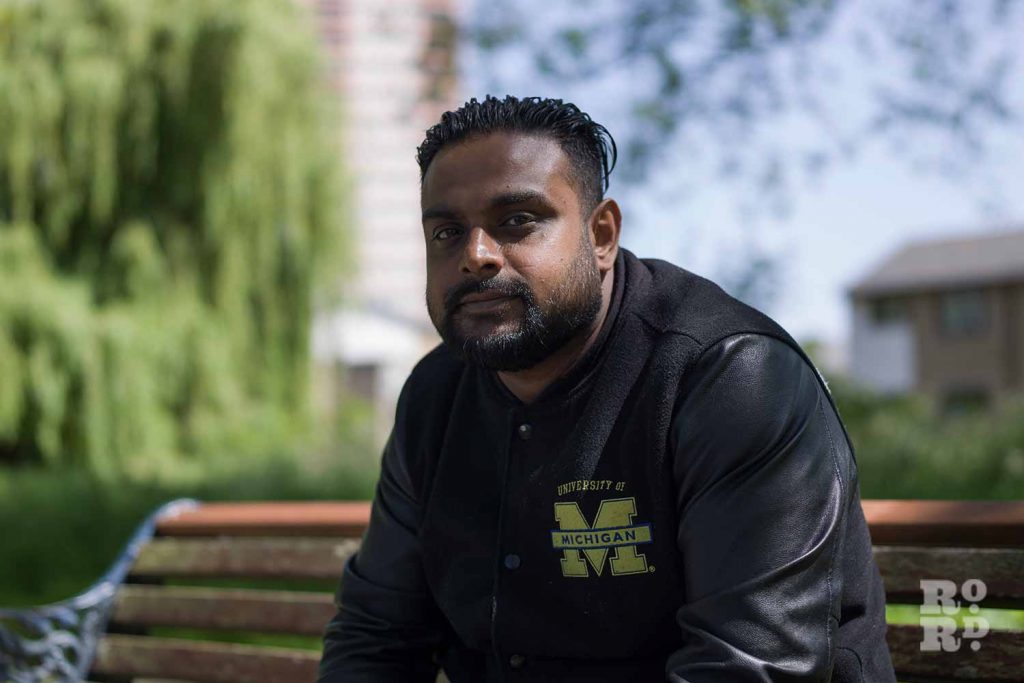
In 2017, a fire broke out in Clare House, the same year as the Grenfell disaster. Tufayel Ahmed, who had lived there since 2016, remembers all the residents knocking on each other’s doors to evacuate everyone from the building. The flame was extinguished before anyone was hurt, but the incident is a reminder of the heightened fire risk in tightly-packed tower blocks.
Though he stays in touch with his former neighbours via WhatsApp and they sometimes meet for a coffee on the Roman, Ahmed says it’s difficult to recreate the closeness of living together in a block of flats.
‘Everyone knew each other in Clare House and really looked out for each other,’ he recalls: ‘Whatever time we got home, we always felt safe walking in and out of the building.’
Featuring in many of the residents’ memories are Shakil and Trevor, the Clare House concierges, who by all accounts never let a resident pass without a smile or a wave.
Despite growing concerns about high gang membership among young people in Tower Hamlets, the concierges’ presence made Ahmed feel safe raising four young children in Clare House. He regrets never having the chance to say goodbye to them in the chaos of the evacuation.
Upon leaving Clare House, Ahmed and his family were uprooted from their community in Bow and rehoused in Tower Bridge. After two weeks on the phone with the Council, they were moved back to Bow into what was supposed to be temporary accommodation just down the road from Clare House.
Though he is relieved to be back on the familiar outskirts of Victoria Park and near his children’s schools in Bow, Ahmed says the current flat isn’t as light or spacious as their two-bedroom family flat in Clare House. Despite Ahmed suffering from depression and heart problems, the family isn’t considered a high priority to be rehoused and the precariousness of living in limbo weighs heavily on his mind.
Faryal Iqbal
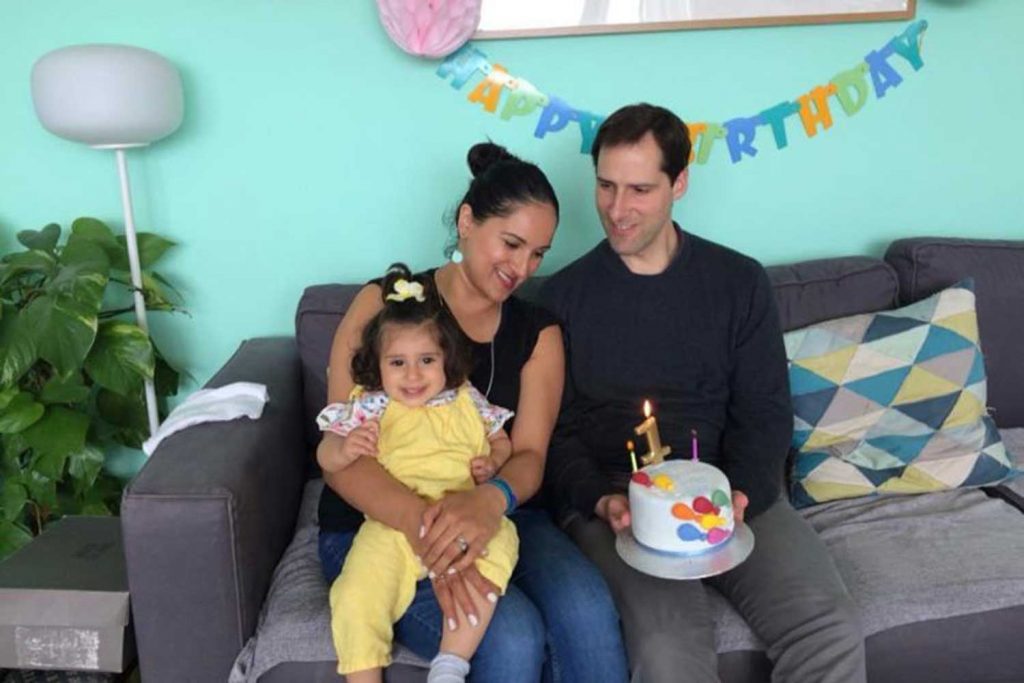
Faryal Iqbal moved into Clare House with her now husband in 2014. Made up of a mixture of private flats and social housing, her flat in Old Ford was the first she’d ever owned. Though the couple moved back to Liverpool after the evacuation, it was in Bow that they embarked on family life, and the area is peppered with memories of those formative years.
‘I’m originally from Liverpool but I found a home and a sense of belonging in East London,’ says Iqbal: ‘I found a home in that oasis, in that park, on that canal.’
A framed photo of a barge on the Hertford Union Canal beside Gunmakers Lane still sits in their new flat, marking the spot where Juan proposed to Faryal. She even gave birth to their first child in their living room, bathed in light from the setting sun coming in through the balcony doors.
‘The concierges knew it was happening and kept calling up to check on me. They always used to joke that my firstborn didn’t even walk in through the doors but was born straight into Clare House,’ she laughs.
As well as the couple’s personal memories, Iqbal says that it wasn’t until after the move that she truly appreciated the support network they had in Clare House. ‘London can be lonely and it can be a struggle to find your community, but not for us … There were so many untapped conversations that I never had and now I wish I did,’ she says.
With All Points East festival and Vicky Park’s much-anticipated summer bandstand season held in their back garden, some residents might’ve grown tired of the constant buzz of action and noise on their doorstep.
But for Iqbal, Victoria Park provides the soundtrack to her memories of the house. From kettle drum music to the Scissor Sisters, she never knew which music genre would be drifting up to her balcony from the park.
‘I remember waking up one spring morning and hearing Bill Withers being sung by a gospel choir at the bandstand… we had that song at our wedding and I just couldn’t believe I was hearing it,’ she recalls.
Suffering from chronic fatigue during her time in Clare House, living so close to nature played a key part in Iqbal’s recovery. She found solace in the ‘life-affirming perspective when looking out onto the expansiveness of the park.’
On the day of the evacuation, Iqbal bought a painting of the colourful block from SNAP Store on Roman Road to remember Clare House and all its inhabitants. The canvas turned out to be the last of its kind left in the shop.
‘I still have the painting hanging in my living room in Liverpool so it feels like Clare House is always with me,’ she says. It captures the house that saw her through chronic fatigue, a marriage proposal, and the birth of her first child: a reminder of her first proper home in Bow.
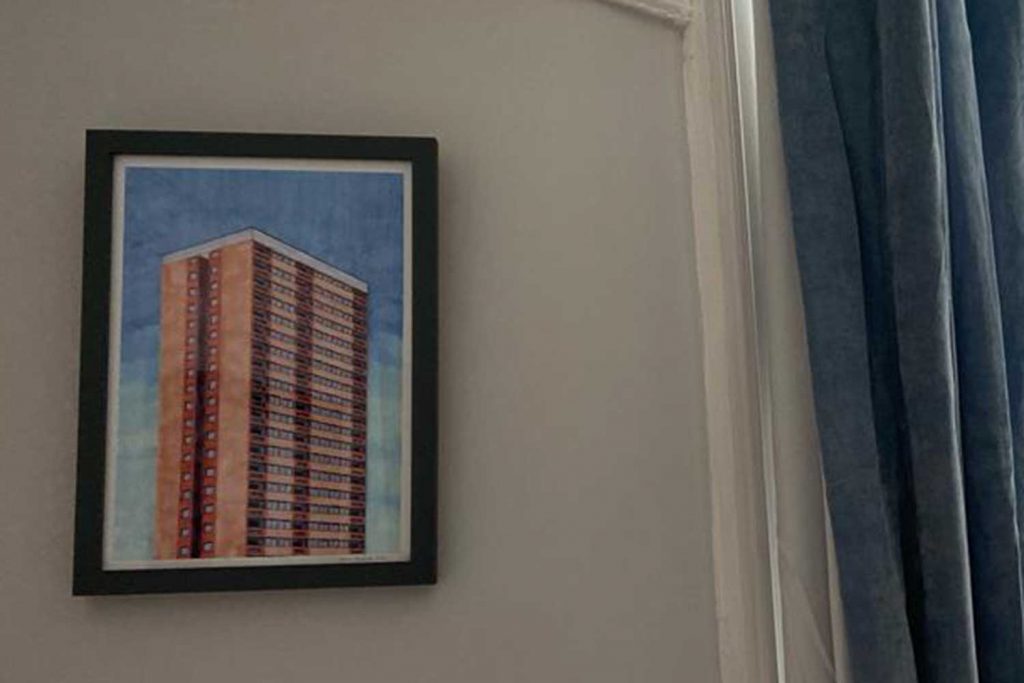
If you enjoyed reading this piece, you might like our previous This is Home article about a Spanish drag queen in Bow.

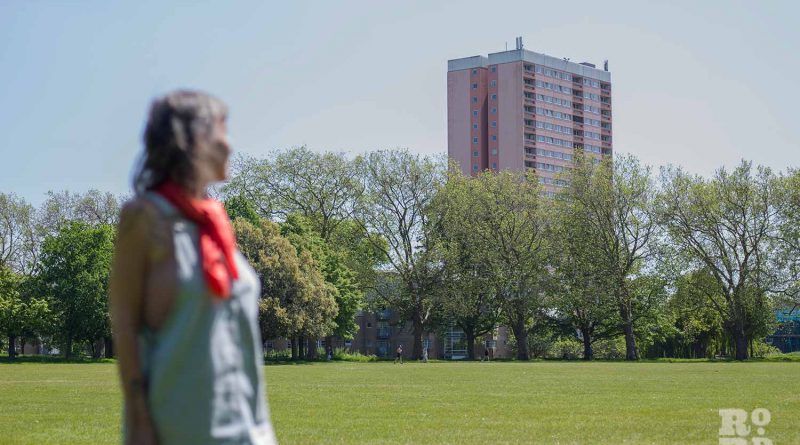
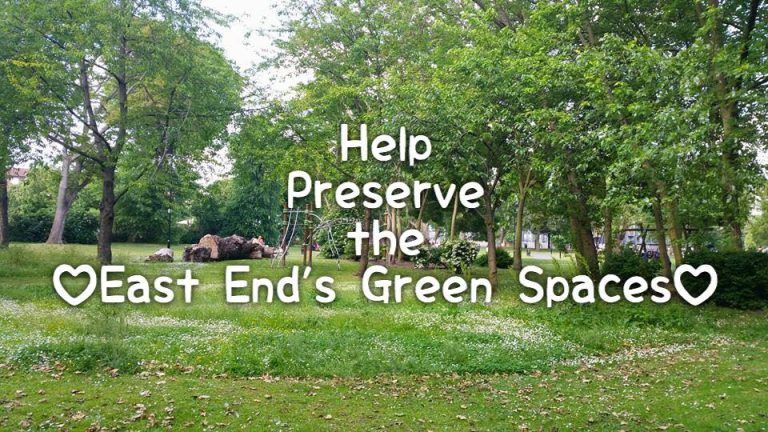

I don’t know why but Claire house may be empty but shouldn’t the lights on the roof still be on so aircraft can see the building?